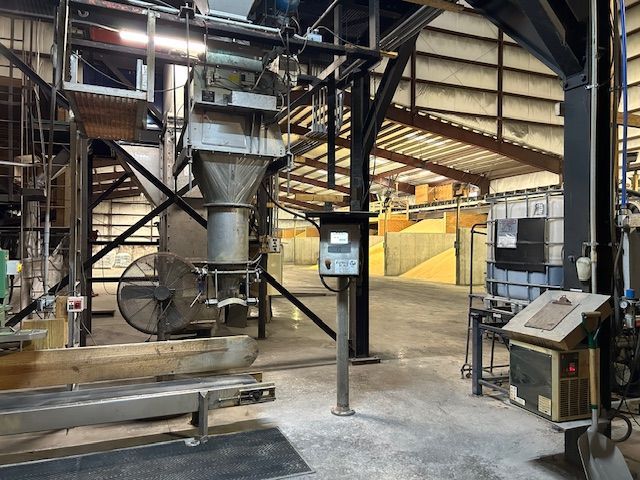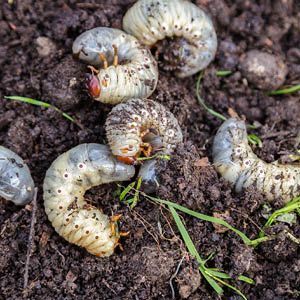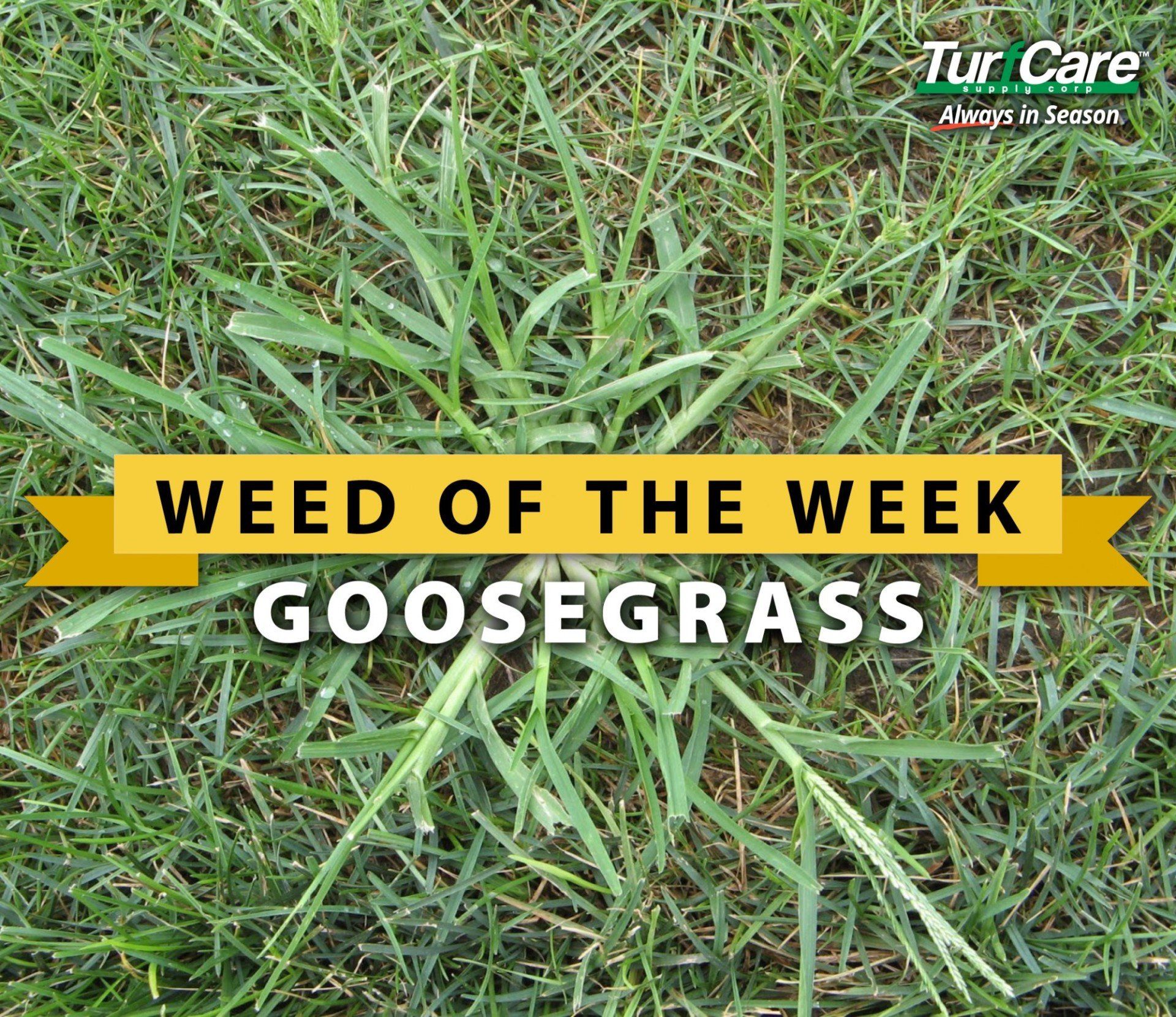TYPE
Goosegrass is among the weed group known as grassy summer annual weeds. Goosegrass grows up to 2ft tall when erect and ½-2ft wide when mature. This weed is a widespread species that can tolerate a broad range of environment changes and conditions. The weed forms around one central taproot that has a fibrous root system.
HOW TO IDENTIFY
Goosegrass, also known as wiregrass, can be identified by its pale green mat-like clumped stems that appear to be entirely flattened. This weed grows in low rosettes and the stems are fleshy at the base. The weed’s leaves are almost hairless except for long hairs on the bases of the blades, sheaths, and collars. The sheaths, or the area where grass leaves wrap around the stem, are whitish, flattened and open near the base of the collar (the outer side of the leaf where the blade and sheath meet). When goosegrass flowers (July - October) it forms into a seed head with three-seven spikes that produce tiny, reddish brown seeds.
- NOTE: A single goosegrass weed can produce 50,000 seeds! Failure to control goosegrass can result in an infestation difficult to manage.
WHERE IT GROWS
This weed is normally located in areas or compact soil or of heavy wear. It can tolerate close mowing heights, as low as 0.125 inches, as well as wet or dry soil. This is a common weed found in cool-season turfs
GROWING SEASON
Mid- spring or when soil temperatures are between 55°- 60°F. Seeds will continue germinating throughout summer. Plants will be killed by first frost.
HOW TO MANAGE
Since goosegrass is a highly invasive weed, it’s better to solve the problem before it gets out of hand with a pre-emergent herbicide. Goosegrass has a centralized root system, and if the infestation is caught in its early stages, hand pulling can be used for management with the use of an appropriate weeding tool. Overall, the best prevention method for goosegrass and any invasive weed is to maintain healthy, dense turf with a strong root system by adopting a regular lawn care routine including fertilization, soil amendments, proper mowing
and watering as well as aeration
and thatch management
practices.
DID YOU KNOW?
Even though goosegrass has a similar life cycle to crabgrass, its seeds germinate four to six weeks later than crabgrass, making it more difficult to tame.
For professional fertilizers, humic and AMP-XC™ enriched products available, please visit TurfCare’s online Product Catalog.
For green industry professionals or others interested in ordering Turfcare products, please contact our Customer Service
to find a distributor near you.
References:
https://extension.umd.edu/hgic/lawns/lawn-weed-identification
http://ipm.ucanr.edu/PMG/WEEDS/goosegrass.html
http://caes2.caes.uga.edu/commodities/turfgrass/georgiaturf/Turfgras/1130_DiagramParts.htm
https://www.backedbybayer.com/~/media/BackedByBayer/Resource%20Library/White%20Paper/Bayer%20Solutions%20-%20Crab%20Goosegrass%20-%20Cool.ashx
http://www.tennesseeturfgrassweeds.org/Lists/Fact%20Sheets/Attachments/4/w170updated2015.pdf
Turf Care Supply - TurfReport Blog

Turf Care Supply, LLC, a portfolio company of Platte River Equity, has officially acquired Beaty Fertilizer, the industry respected Tennessee-based manufacturer and blender of custom granular and liquid fertilizers, as well as combination products. This strategic move expands Turf Care’s manufacturing footprint, adds new product capabilities, and enhances overall production capacity. “The partnership with Beaty Fertilizer marks a major milestone in our journey and an important step forward in our mission to grow, innovate and lead in our industry,” said Mark Mangan, President of Turf Care. “This acquisition is more than just expansion; it’s a powerful opportunity to strengthen our product offerings, broaden our market reach and provide greater value to our customers. By welcoming Beaty into the Turf Care family, we are reinforcing our commitment to excellence and positioning ourselves for an even brighter future.” “We are excited about this next step in the Beaty Fertilizer story. For almost 50 years, our family and our employees have worked hard to serve customers and communities with pride and heart,” said John Beaty, President of Beaty. “Now, we are embracing an opportunity for growth with Turf Care. With our combined know-how and resources, we’ll keep building on what we’ve worked so hard to create and bring even more value to our customers, employees and partners. We truly believe this partnership will keep the Beaty legacy going strong while opening up new doors for growth and innovation.” Tarun Kanthety, Vice President at Platte River, added, “We believe the acquisition of Beaty Fertilizer represents a strategic step in expanding Turf Care’s footprint and product breadth... as it scales and enhances its value proposition to customers.”

Root out Grubs, Before they Attack Yours! White grubs, the immature stage of several scarab beetles—including Japanese beetles, masked chafers, May and June beetles, and green June beetles—are a major threat to turfgrass across the Southeast. These beetles follow a complete metamorphosis (egg, grub, pupa, adult), with most species completing their cycle in one year. Eggs are laid in early summer, grubs hatch within two weeks, and begin feeding on turfgrass roots through the late summer and fall. May and June beetles differ slightly, with a two- to three-year life cycle and prolonged feeding as third-instar grubs. Grubs damage turf by severing roots, causing grass to yellow, wilt, or lift easily from the soil. Feeding is typically concentrated in patches and worsens during hot, dry weather. Wildlife digging for grubs can create further turf destruction. Healthy turf may tolerate 5–10 grubs per square foot, but damage becomes evident as populations rise or turf is under stress. Early detection and timing are essential. Scouting begins in late June, shortly after adult beetle activity peaks. Monitoring plants favored by beetles can signal egg-laying is underway. Treatment is most effective when small grubs are active—typically from mid-July through early August. For professional turfgrass managers, insecticides containing imidacloprid (Merit®), chlorantraniliprole (Acelepryn®), or trichlorfon (Dylox®) are the most effective tools. The primary months of preventative application of Acelepryn® is from April to end of May and Merit® from April into July - targeting grubs before they hatch. Curative treatments with Dylox® or similar products are applied July through the fall, when young grubs are feeding and most vulnerable. Always follow label directions for optimal application and safety. Timing may vary slightly by regional seasonal needs. Turf Care Supply has a variety of professional TCS Growstar insecticide fertilizers available to protect your turf and prevent grub damage, before it starts. Click on the button below to view products, contact your sales rep for addition TC Growstar products available.

Platte River Equity Portfolio Company Turf Care Supply, LLC Acquires Agri-Nutrients, Inc. Brunswick, OH , October 9, 2024 – Platte River Equity (“Platte River”) portfolio company Turf Care Supply, LLC (“Turf Care”) is pleased to announce its acquisition of Agri-Nutrients, Inc. (“Agri-Nutrients”), a manufacturer and blender of custom granular fertilizers for the turf & ornamental (“T&O”) industry. This strategic acquisition provides Turf Care with an established presence in the south-central United States, an enhanced product portfolio and additional manufacturing capacity. “This acquisition represents much more than a business transaction; it is a strategic step forward in expanding our reach and enhancing our customers’ growth. By bringing Agri-Nutrients into the Turf Care family, we are broadening our product portfolio, expanding our market presence and further positioning ourselves as a leader in providing innovative solutions for our customers,” said Mark Mangan, President of Turf Care. “We are excited about joining the Turf Care team,” said Jim Montgomery, President of Agri-Nutrients. “At Agri-Nutrients, our core values center around customer service and product innovation, and we are confident that this combination will allow us to better serve the needs of our customers.” “Platte River welcomes the Agri-Nutrients team to Turf Care. This transaction underscores our long-term commitment to fostering growth through both organic and inorganic initiatives across the Turf Care platform,” said Tarun Kanthety, Vice President of Platte River. “The partnership with Agri-Nutrients strengthens Turf Care’s value-added offering, creating additional growth opportunities across the combined customer base.” B&A Corporate Advisors served as the exclusive financial advisor to Agri-Nutrients. About Agri-Nutrients Founded in 1992 and based in Catoosa, OK, Agri-Nutrients is a manufacturer and blender of custom granular fertilizers for the T&O industry, predominantly selling into the lawn care, sports turf and golf course end markets. About Turf Care Supply Established in 1974, Turf Care Supply is one of the largest formulators and blenders of urea products to the T&O market. Turf Care has a comprehensive product portfolio of fertilizers, combination products (herbicide/insecticide), soil amendments and enhanced efficiency fertilizer ingredients. Turf Care's products are sold to distributors and blenders serving the commercial, residential and golf end markets. Turf Care operates four manufacturing facilities strategically located throughout the eastern U.S. About Platte River Equity Founded in 2006 and based in Denver, CO, Platte River Equity is a private equity firm focused on investments in established lower middle market operating companies within targeted industrial sectors where it has substantial operating and investing experience. Platte River utilizes prudent capital structures in order to invest in future growth opportunities and withstand changing economic environments. The firm also provides significant ongoing support to its portfolio companies through dedicated resources across functional areas. The firm has raised funds with committed capital in excess of $1.6 billion and is currently investing out of its fifth fund. The Platte River team is the largest collective investor across its funds, deeply aligning the firm with its investors and portfolio company management teams.

